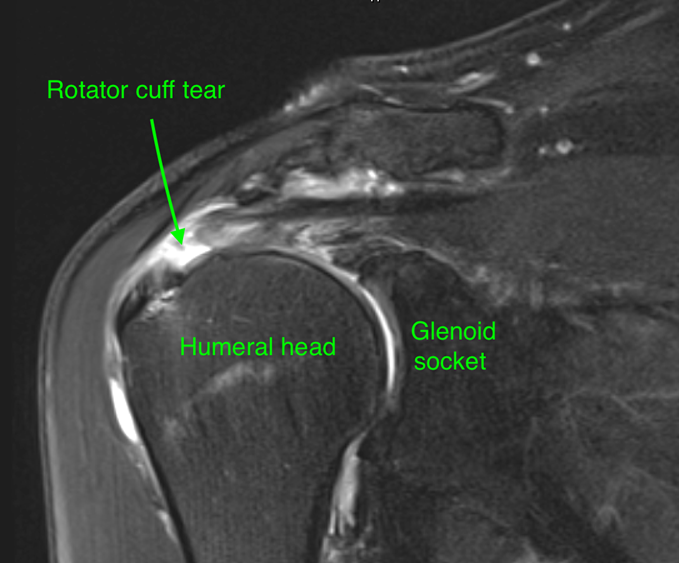Rotator Cuff Tears
The rotator cuff is a group of muscles that arise from the scapula and insert into tuberosities of the upper humerus. Four muscles (subscapularis, supraspinatus, infraspinatus and teres major) form the rotator cuff.
Subscapularis arises from the front surface of the scapula. It runs across the shoulder and attaches to the front of the humerus. Its function is to rotate the shoulder inwards. Supraspinatus originates from the back of the shoulder blade above the scapular spine. It attaches to the top of the greater tuberosity. Supraspinatus initiates lifting the arm out to the side until the stronger deltoid takes over. Infraspinatus arises from the back of the scapula below the scapular spine and attaches to the lower part of the greater tuberosity. Along with the teres major muscle, they are a powerful external rotator of the shoulder. The rotator cuff tendons also work in conjunction to stabilise the shoulder joint.

Dr Brown has successfully treated many patients with rotator cuff injuries and is knowledgeable in the latest non-surgical and surgical treatments.
Call us on (03) 5223 3151 Book an appointment today.
Ageing
Tears
There are two types of tendon tears. The most common variety is a degenerative tear that is the result of ageing or progressive “wear and tear”. Often these tears are present but don’t cause symptoms. 30% of people over the age of 70 years have a rotator cuff tear. The majority of these tears are asymptomatic or only cause mild problems. These tears often only become painful after a seemingly minor injury, a fall or sometimes after overuse of the shoulder. The second type is an acute or fresh tear that occurs after a specific injury. It tends to occur in younger people, especially under the age of 50 years. They also commonly occur after a shoulder dislocation in people over the age of 40 years.

Diagnosis & treatment

Management of your rotator cuff tear depends on several factors. Important factors include your age, your activity level, the type of work you perform and your symptoms. Other significant findings include how your shoulder moves, the presence of any weakness and the presence of any muscle wasting. In determining the best treatment for your rotator cuff tear, it’s essential to know two things. The first is that a rotator cuff tear cannot heal itself. The second is that not all rotator cuff tears need surgery. Pain from a rotator cuff tear may be due to several factors, and often the pain resolves without surgery. As discussed above, depending on your age, you may have already had rotator cuff damage that has not caused any symptoms. So there is a good chance that your pain will settle with nonoperative treatment.

